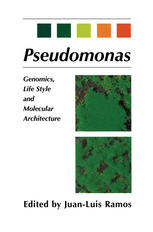

Most ebook files are in PDF format, so you can easily read them using various software such as Foxit Reader or directly on the Google Chrome browser.
Some ebook files are released by publishers in other formats such as .awz, .mobi, .epub, .fb2, etc. You may need to install specific software to read these formats on mobile/PC, such as Calibre.
Please read the tutorial at this link: https://ebookbell.com/faq
We offer FREE conversion to the popular formats you request; however, this may take some time. Therefore, right after payment, please email us, and we will try to provide the service as quickly as possible.
For some exceptional file formats or broken links (if any), please refrain from opening any disputes. Instead, email us first, and we will try to assist within a maximum of 6 hours.
EbookBell Team

4.0
26 reviewsPseudomonas comprises three volumes covering the biology of pseudomonads in a wide context, including the niches they inhabit, the taxonomic relations among members of this group, the molecular biology of gene expression in different niches and under different environmental conditions, the analysis of virulence traits in plants, animals and human pathogens as well as the determinants that make some strains useful for biotechnological applications and promotion of plant growth.
There has been growing interest in pseudomonads and a particular urge to understand the biology underlying the complex metabolism of these ubiquitous microbes. These bacteria are capable of colonizing a wide range of niches, including the soil, the plant rhizosphere and phylosphere, and animal tissues; more recently they have attracted attention because of their capacity to form biofilms, a characteristic with potentially important medical and environmental implications.
The three volumes cover the following topics:
- Taxonomy,
- Genomics,
- Life styles,
- Cell Architecture,
- Virulence,
- Regulation,
- Macromolecules,
- Alternative Respiratory Substrates,
- Catabolism and Biotransformations.
Pseudomonas will be of use to all researchers working on these bacteria, particularly those studying microbiology, plant crops, pathogenesis, and chemical engineering. Advanced students in biology, medicine and agronomy will also find these three volumes a valuable reference during their studies.